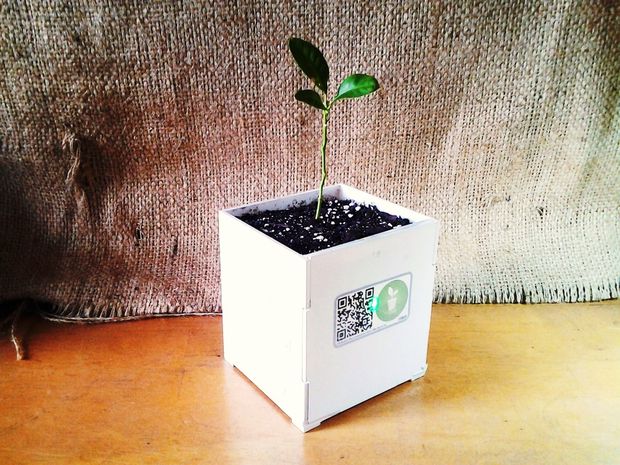Instructables developed the world’s first stand-alone smart plant pot, almost a year ago, which had the ability to email you when it’s thirsty, cold, hot, sleeping, etc. The pot is open source hardware + software and is solder-free, making it appropriate for any age group as an all-around educational tool.

With the vision to upgrade the system with latest and most stable version, they have introduced an amended model. Through this experiment, you will learn to build circuits, write code and end up with a device that will teach you gardening. The project is compatible for amateurs as no prior electronics or gardening experience is required.
You are required to collect certain equipment for this project which includes Wi-Fi microcontroller, battery pack, breadboard, RGB led module, temperature/humidity module, light sensor, water sensor, jumper wires and some magnets. You can begin the project by joining the frame with an adhesive and make sure the assembly is very straight forward and all joints are water sealed to protect the electronics. Then place the magnets on the door.
The water sensor is inserted into the leg slots and made water sealed with glue after sensibly bending the connector legs to a 90-degree angle for wiring the circuit. The battery comes with a short USB cable, which can be used to power the microcontroller or you can hack the power bank to internally connect the microcontroller on the breadboard. The remaining sensors, light, and temperature are hot glued along with RGB LED, which is attached to the magnetic door.
For wiring + code, visit https://thingspeak.com/users/signup & create an account and then change the channel name and type in the fields that you want to record (temperature, light, humidity etc.). Then the “API Keys” tab is clicked and copied to insert into the code. With this, you can upload and capture data to the online channel and can download it later in excel format. Once the channel is created, e-mail alerts can be set, where the web page will automatically tweet “alarms”.
The light, temperature and water levels can be adjusted within the code. Now, end your project by putting tape around the openings and white matte textured spray paint to protect the electronics. Now, you can add soil and seeds or plants and conclude your project. For more details visit the following link.
Filed Under: Reviews


Questions related to this article?
👉Ask and discuss on Electro-Tech-Online.com and EDAboard.com forums.
Tell Us What You Think!!
You must be logged in to post a comment.